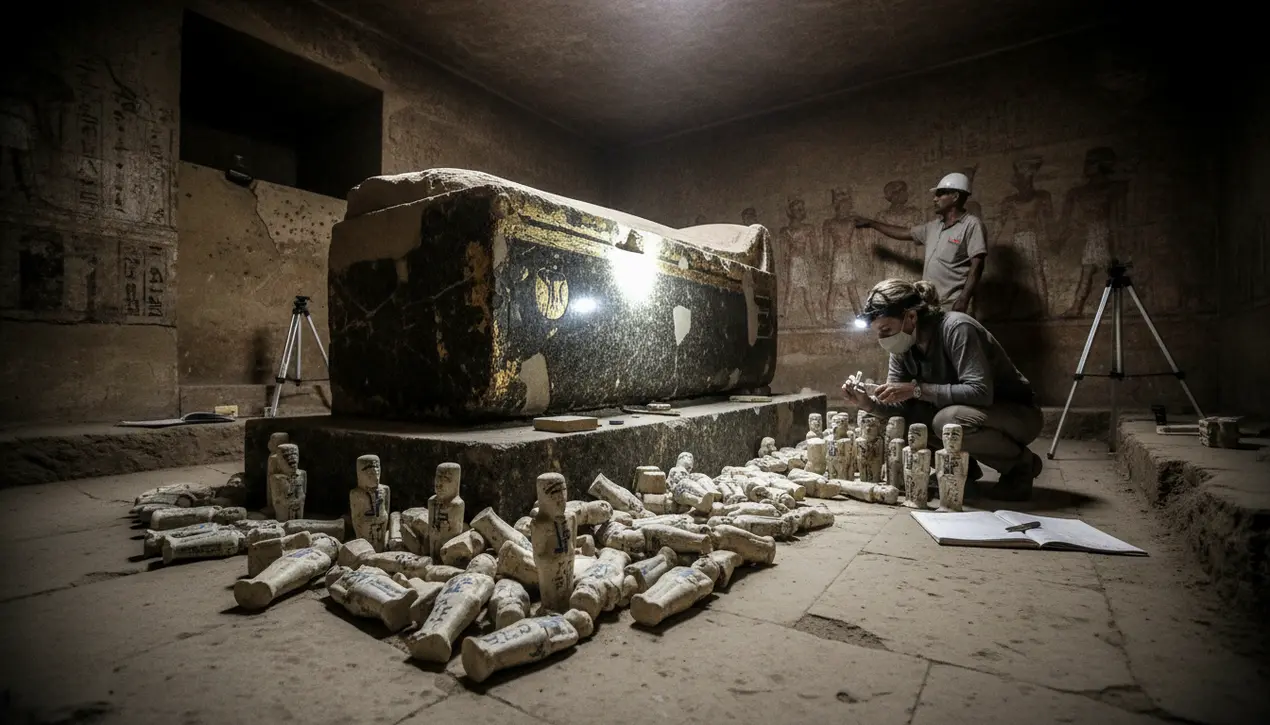
SciencearchaeologyAncient Civilizations
Ancient Pharaoh May Have Hijacked Another's Tomb
TH
Thomas Green
19 hours ago7 min read
In a discovery that reads like a cosmic puzzle box left by time itself, archaeologists in the sands of Tanis have unearthed a tantalizing mystery worthy of a pharaoh's curse. The tomb of Osorkon II, long thought to be a singular royal resting place, has yielded hundreds of funeral statues, or shabtis, but their sheer number and conflicting inscriptions whisper a startling secret: the chamber may be a shared, or perhaps even hijacked, eternal dwelling.This isn't merely a case of a crowded crypt; it’s a celestial heist, a potential act of royal identity theft on a scale that would make a modern grave robber blush. The prevailing theory, pieced together from the ceramic and faience fragments, suggests the physical remains within belong not to Osorkon II but to his successor, Shoshenq III, a pharaoh from a later dynasty who might have commandeered the pre-built, grander tomb in a move of posthumous pragmatism or outright power play.Imagine the audacity—a leader so intent on securing his legacy among the stars that he would bypass the decades-long construction of his own pyramid to simply slide into the sarcophagus of his predecessor, a real estate grab in the afterlife. This find forces us to re-evaluate the very fabric of Egyptian succession and the concept of divine kingship.Were the priests complicit in this silent coup, carefully repositioning the funerary equipment and crafting new shabtis to serve the new occupant in the Field of Reeds, all while maintaining the public façade of continuity? Or was this a quieter, more desperate act by a regime struggling with resources or stability, a symbolic gesture to cement a shaky claim to the throne by physically inheriting the sacred space of a revered ancestor? The implications ripple through our understanding of the 22nd Dynasty, a period marked by internal fragmentation and shifting power centers. Experts like Dr.Eva von Dassow, a leading Egyptologist not directly involved with the excavation, suggest that such a 'tomb hijacking' is less about disrespect and more about a profound, albeit politically charged, form of flattery and consolidation. It’s the ancient equivalent of a corporate takeover, where the new CEO immediately moves into the corner office of the old one to signal a seamless transition of authority.The shabtis themselves, those miniature servants intended to perform manual labor for the deceased in the afterlife, now serve a dual purpose: they are both artifacts and accusers. Their styles, materials, and hieroglyphs are being meticulously cross-referenced, acting as celestial forensic evidence to determine the true timeline of occupancy.This discovery at Tanis, a city that rivaled Thebes in its grandeur, opens a new window into the pragmatic, and sometimes ruthless, realities of immortality-seeking civilizations. It reminds us that the journey to the afterlife was not always a straight, pre-ordained path but could be a contested, messy, and profoundly human affair, where even a pharaoh’s eternal rest was subject to the political currents of the living world.
#featured
#archaeology
#ancient Egypt
#pharaoh
#tomb
#funeral figurines
#Osorkon II
#Shoshenq III
#Tanis
Stay Informed. Act Smarter.
Get weekly highlights, major headlines, and expert insights — then put your knowledge to work in our live prediction markets.
Related News
Comments
Loading comments...
© 2025 Outpoll Service LTD. All rights reserved.